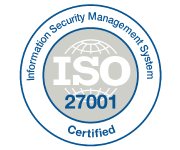See What's Trending In The Background Check Industry
Three of the Top Identity Verification Methods
 In an increasingly interconnected digital world, identity verification is key to securing trust. Whether to prevent fraud, ensure security, or maintain personal safety, the ability to confirm that someone is truly who they claim to be has never been more crucial. So, how exactly do we pierce through the veil of deceit or error? Let’s take a deep dive into three of the prevalent methods that are employed to unravel the truth of identity.
In an increasingly interconnected digital world, identity verification is key to securing trust. Whether to prevent fraud, ensure security, or maintain personal safety, the ability to confirm that someone is truly who they claim to be has never been more crucial. So, how exactly do we pierce through the veil of deceit or error? Let’s take a deep dive into three of the prevalent methods that are employed to unravel the truth of identity.
1. Knowledge-based authentication (KBA): What was the name of your first pet? It is a simple question, but its answer can be key to establishing your identity.
How it works: KBA revolves around a principle that a genuine individual would know specific details or secrets that an imposter wouldn't. These details often include passwords, answers to security questions, or pin codes.
Strengths: This is a straightforward method and requires no additional hardware or documentation.
Weaknesses: In the age of social media, blogging, and data breaches, personal information is more accessible than ever. A determined fraudster might find or deduce answers to common security questions. Maybe you once made a publicly accessible post or a comment somewhere about your favorite movie, childhood pet, first vacation, or your mother’s maiden name, for instance.
 2. Possession-based authentication (PBA): This is the principle behind the familiar adage, “possession is nine-tenths of the law.” If you hold something unique, it verifies your identity.
2. Possession-based authentication (PBA): This is the principle behind the familiar adage, “possession is nine-tenths of the law.” If you hold something unique, it verifies your identity.
How it works: This method validates identity based on something a person possesses. It could be a physical item like a smart card, security token, or a smartphone. In digital platforms, it often translates to a temporary code sent via SMS or through an app.
Strengths: This is a tangible method of verification, often providing a second layer (or two-factor authentication) when combined with KBA.
Weaknesses: Lost or stolen possessions can lead to security breaches. Additionally, SMS codes can be intercepted or rerouted, making them less secure than other possession-based methods.
 3. Inherence-based authentication (IBA): This method is rooted in the unique physiological or behavioral traits of an individual. Essentially, it’s the “you are uniquely you” approach.
3. Inherence-based authentication (IBA): This method is rooted in the unique physiological or behavioral traits of an individual. Essentially, it’s the “you are uniquely you” approach.
How it works: Biometric systems fall into this category. Including fingerprint scanning, facial recognition, voice pattern recognition, and even retinal scans; these are traits almost impossible to replicate or transfer.
Strengths: Biometrics offer an extraordinarily high level of security, as they hinge on unique characteristics. An individual’s fingerprint, for instance, is unique to them, making it a robust verification tool.
Weaknesses: Privacy concerns arise with biometrics. If compromised, you can change a password, but you can't change your fingerprint or retina. Additionally, some systems might bring up false positives or negatives due to technological limitations.
ISB Global Services Offerings
While each of these methods provides a robust framework for identity verification, their effectiveness is augmented when carried out with precision, expertise, and an understanding of the evolving digital landscape. This is where ISB Global Services and its identity verification services come into play. ISB is not just another entity in the verification arena. It leverages advanced technology combined with a deep-rooted understanding of background checks and identity verification to provide unmatched services. In an increasingly digital world that is full of deception, ISB stands as a bulwark, safeguarding trust and integrity.







While we are not affiliated with or employed by these organizations, we may reference our verified status in marketing materials, proposals, and client communications to demonstrate ISB’s commitment to compliance and security.